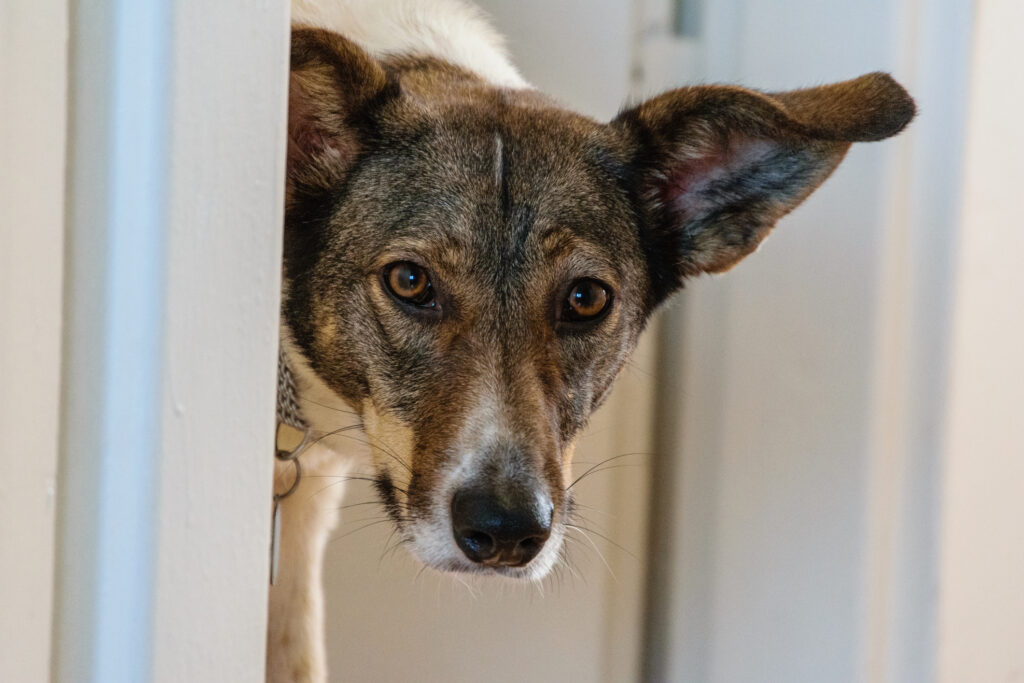Canine aggression is trending up to pre-pandemic heights, exacting a devastating toll on victims. So why are fewer cases ending up in dog court?
By Jennifer Wadsworth
Yuko Murakami upended her entire routine after an ambush by an unleashed rottweiler left her hospitalized for nearly a week and her pit bull Buck fearful of other dogs.
Murakami, a UCSF nurse anesthetist, spent six days in the hospital and $12,000 on out-of-pocket medical bills to stitch up her torn calf and surgically treat an infection from the bite on her hand. She spent another $1,000 — and counting — on a dog behaviorist to learn how to manage her now-skittish canine companion.
It took months after the mauling last fall in Potrero Hill for Murakami to venture out alone with Buck again. Dog parks are now out. Off-leash isn’t an option. Busy streets are an obstacle course of triggers for Buck, a 70-pound rescue whose newly anxious disposition — if unaddressed — could render him as dangerous as the dog who attacked them.
“I still get nervous when I see other dogs off-leash,” Murakami said, “or with owners distracted on the phone.”

More bites, less enforcement?
Joey DeHaven was taking out the trash at his Pine Street apartment when 8-year-old Ajaxx, a pug-mini pinscher mix, made a break for it. DeHaven didn’t notice the dog was gone until he heard desperate yelps from the main lobby.
In emotional testimony at an Aug. 6 hearing, DeHaven recounted how he ran downstairs and scooped up his shrieking 10-pound dog to get him away from a neighbor’s white husky-lab mix, Max.
After whisking Ajaxx back to his flat, DeHaven realized the dog was bitten. “It ripped his skin up, so much so that his skin was torn up from his neck,” he said, fighting back tears.
DeHaven filed a bite report through animal control and never knew what came of it. The next time he heard an update about Max was in the headlines, after the dog attacked a 3-year-old boy in the Marina, leaving bite marks on the arm that required five stitches.
Apparently it wasn’t enough that DeHaven reported the first bite. If he had requested a dangerous dog hearing, an official could have handed down an order to muzzle Max or sentence him to obedience training. But no one explained that to DeHaven at the time.
When ABC7 news pressed Animal Care and Control Director Virginia Donahue on the matter this summer, she insisted that the instructions on the agency’s website are clear.
What’s not clear from the website is how the city’s canine criminal justice bureaucracy involves at least a few agencies that don’t necessarily investigate every bite and don’t necessarily summon a hearing unless a citizen knows enough to expressly request one.
Perhaps in no small part because of that confusion, fewer dog attacks are getting adjudicated.
As documented bites rose from 590 in 2020 to 760 last year, dog hearings fell from 159 to 37, city data show. Twenty-six hearings were held in the first eight months of this year, including the one for Max in early August that resulted in a euthanasia order this past week. No dog hearings were scheduled when The Standard last checked days ago.



